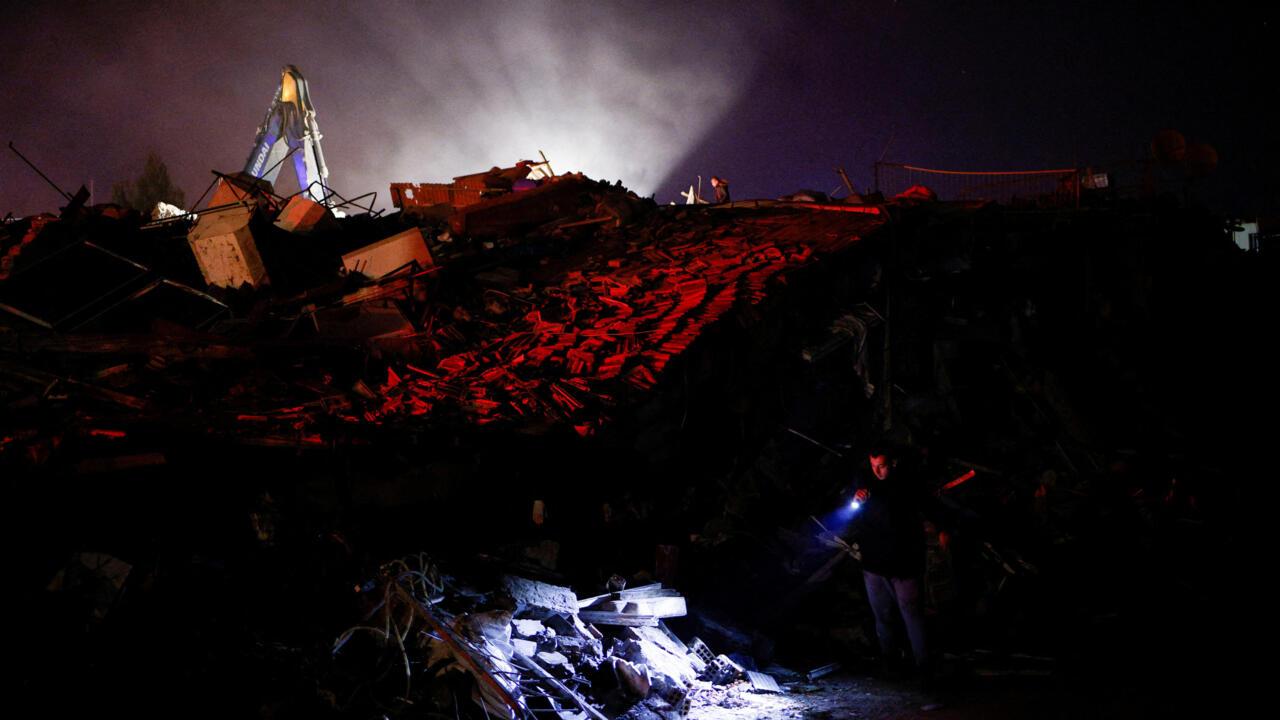Catastrophic earthquake leaves trail of destruction as cities reduced to rubble, ancient landmarks in ruins.


Ankara: The death toll from Monday’s 7.8-magnitude earthquake, that struck Turkey and Syria, has climbed above 15,000, according to authorities, as rescue workers continued to pull living people from the toppled buildings.
As per officials and medics, 12,391 people had died in Turkey and 2,992 in Syria, bringing the confirmed total to 15,383. Tens of thousands more were injured.
Rescue teams in Turkey and Syria have been searching for signs of life from an untold number of people trapped in the rubble in freezing weather.
Teams from more than two dozen countries, including Pakistan, have joined tens of thousands of local emergency personnel in the effort.
Experts said the survival window for those trapped under the rubble or otherwise unable to obtain basic necessities was closing rapidly. At the same time, they said it was too soon to abandon hope.
But the scale of destruction from five back-to-back tremors was so immense and spread over such a wide area that many people were still awaiting help.
Some of the heaviest destruction occurred near the quake's epicentre between Kahramanmaras and Gaziantep, where entire city blocks lay in ruins.
Turkey said almost 3,000 buildings had collapsed in seven different provinces—including public hospitals.
In Syria, authorities reported damage across the provinces of Aleppo, Latakia, Hama and Tartus, where Russia is leasing a naval facility.
A famous mosque, dating back to the 13th century, partially collapsed in the province of Maltaya, where a 14-story building with 28 apartments that housed 92 people collapsed.
Social media posts showed a 2,200-year-old hilltop castle built by Roman armies in Gaziantep lying in ruins, its walls partially turned to rubble.
Notably, the devastation occurred in one of the longest continuously inhabited areas on the planet within the so-called Fertile Crescent, which has witnessed the emergence of different civilisations from the Hittites to the Ottomans.

Inside the high drama of the iPhone 4
- 6 hours ago

Everything is a mockumentary now, thanks to Rob Reiner
- 4 hours ago

Tremors felt in Balochistan's Barkhan district
- 17 hours ago

Met Office forecast rain, snowfall from Dec 20
- 15 hours ago

The low, low cost of ending extreme poverty
- 4 hours ago
NFL playoff-clinching scenarios: Which teams can secure a berth in Week 16?
- 5 hours ago
India summons Bangladesh envoy over security concerns in Dhaka
- 18 hours ago
What is going on with Trevon Diggs and the Dallas Cowboys?
- 5 hours ago
NDMA dispatches 27th aid consignment for Palestinians
- 16 hours ago

The global shadow economy behind Trump’s latest move on Venezuela
- 4 hours ago
Pakistan Navy launches fourth Hangor Class submarine 'Ghazi' in China
- 14 hours ago

You need to listen to Sudan Archives’ violin opus for the club
- 6 hours ago



